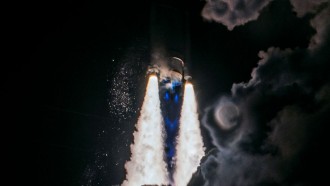A researcher at Queen's University in Belfast has warned that Earth is in danger of an asteroid strike.
Asteroid Day
Alan Fitzsimmons has warned that it's only a matter of time before an asteroid strikes the Earth again. Fitzsimmons and other scientists are hoping to use Asteroid Day as a way of drawing attention to the possibility of a Near Earth Object striking the planet.
On Jun 30, 1908, an asteroid exploded over Siberia and affected 800 square miles. If a similar asteroid were to strike a major city, the consequences could be devastating. Fitzsimmons noted that we have gotten much better about detecting such events, but there is still a possibility that one could take us by surprise.
"Astronomers find Near-Earth Asteroids every day and most are harmless," said Fitzsimmons. "But it is still possible the next Tunguska would take us by surprise, and although we are much better at finding larger asteroids, that does us no good if we are not prepared to do something about them"
Near-Earth Objects
Thousands of small asteroids strike the Earth every year. Most of these near-Earth objects are small enough that they do no damage, and the threat of a large one hitting the Earth is relatively low. That being said, low is not the same as zero and the planet is not prepared to deal with such a threat. The problem is that the costs of protecting the Earth from larger NEOs are extremely high whereas the actual risk of getting hit by a large NEO are small.
The problem being is that, of course, if the Earth were to be hit by a large NEO the effects could be catastrophic. It might not mark the end of human civilization, but it could kill or displace millions. Again, the chances of this happening are very low, but it is within the realm of possibility.
In May, researchers discovered that the Taurid meteor stream could send a thousand foot asteroid crashing into the Earth. That isn't as large as the one that wiped out the dinosaurs —Chicxulub is estimated to have been more than 9 miles long— but it would still be large enough to devastate the planet.
The last recorded incident of a large NEO hitting the Earth was in 2013 when Chelyabinsk Asteroid, which was estimated to weigh over 10 tons, exploded above the Ural Mountains in Russia. The asteroid explosion carried the force of an atom bomb and more than a 1,000 people were injured by the shockwave that followed.









